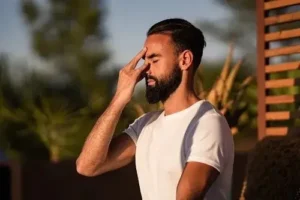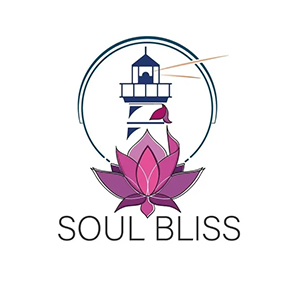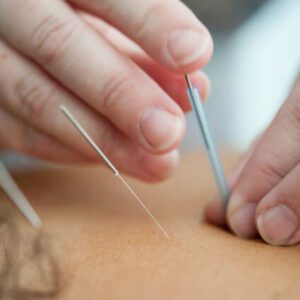
Author: Marcelo Lopes, Psychologist
In part I of this article we talked about how breathing is involved in everything we do and in every function of our bodies, and yet it’s amazing how many of us don’t they know how to breathe correctly. We know that breathing is one of our main sources of energy.
We talked about how breathing profoundly influences the nervous system, and how we can influence our health and condition by “manipulating” how we breathe (more deeply, more slowly, etc.).
Read the first part of this article.
Far Beyond Stress
If stress influences our breathing, making it shorter and shallower, ineffective breathing also leads to a feeling of more stress. It’s a vicious circle. Whether the threat has already ended and we haven’t yet had a moment to relax, or whether the challenge is constant and doesn’t give a break, breathing continues to be altered – encouraging this cycle. This process goes far beyond stress, which already causes enough damage and we are all tired of hearing about it. Therefore, it is worth knowing in more detail the harm of not breathing properly:
-
- There is no effective oxygenation of the brain – Which contributes to difficulties concentrating, inability to manage emotions, irritability and memory loss
- Changes in the immune system – If a brief peak of stress makes the immune system more effective, optimizing the production of anti-inflammatory hormones, in the long term this does not happen, as there is an unsustainable energy expenditure and the body becomes resistant to the effect of these hormones (similar to how you become insulin resistant)
- Depression and chronic fatigue – in the long term, all this energy expenditure and ineffective oxygenation can deplete our energy
- Anxiety, insomnia and increased blood pressure – associated with a faster heartbeat and the entire hormonal component associated with constant alertness
- Shortening of the diaphragm and atrophy of the remaining respiratory muscles – we were made to breathe in the entirety of our chest space, with all the muscles involved contracting and relaxing with each inhalation and exhalation; not to take short breaths, in which the muscles do not play their role
- Back pain and poor posture – exactly because there is atrophy of the thoracic muscles, which connect to the spine, the space between the vertebrae decreases, altering the posture and increasing tension in the chest, where the antagonists of the dorsal muscles are found (i.e., a tendency to close the chest and increase tension on the spine).
Back to the Natural Rhythm
We cannot finish without leaving some tips, after all, the reader has followed everything up to this point and received a very robust theoretical lesson, in addition to raising awareness of so many negative aspects. We think it’s good to stick with exercise so you can, at your own pace, return to a calm state and recover properly.

The exercise can be done sitting or lying down, with your eyes open or closed – whatever is most comfortable for you.
The proposal is, in a similar way to what was discussed in the previous post, to bring awareness to what is happening inside your body.
You can start by checking how your breathing is, before even trying to influence it, noticing aspects such as rhythm, depth, tension, sensation. With genuine curiosity and interest, get to know your breath, just as it is. After a few moments, try to slow down the pace a little while gradually increasing the depth – allowing the abdominal area to be involved in the breathing, so that each inhalation is a true breath of fresh air, full of vital energy.
If it helps, you can count the number of times you breathe over the course of a minute and, over the next few minutes, try to gradually reduce your pace.
It is not recommended to make sudden changes in rhythm, taking into account that the nervous system can interpret a quick change as a threat, and turn on alert mode, causing the heart to race and everything else.
Gradually, surrender to your breathing and feel your body relaxing. The mind will wander, so breathing will be the anchor you can return to whenever you notice this wandering. Enjoy this relaxation and all the vital energy that is filling you right now. Feel alive, feel safe and, above all, know that this way of being is your choice.
If you are interested in deepening your breathing practice, learning advanced pranayama techniques or enjoying the therapeutic aspects of breathing for the body and mind, get in touch with the Soul Bliss team. We are waiting for you!
References
Nivethitha, L., Mooventhan, A., Manjunath, N. K., Bathala, L., & Sharma, V. K. (2017). Cerebrovascular hemodynamics during pranayama techniques. Journal of Neurosciences in Rural Practice, 8, 60–63.
Nivethitha, L., Mooventhan, A., Manjunath, N. K., Bathala, L., & Sharma, V. K. (2018). Cerebrovascular Hemodynamics During the Practice of Bhramari Pranayama, Kapalbhati and Bahir-Kumbhaka: An Exploratory Study. Applied Psychophysiology and Biofeedback, 43, 87–92
Brown, R. P. & Gerbarg, P. L. (2017). Breathe – the healing power of breathing. Paper Moon.
Saraswati, S. (2002). Asana pranayama mudra bandha (3rd revised ed.). Munger: Yoga Publications Trust.
Telles, S., Singh, N., & Balkrishna, A. (2011). Heart rate variability changes during high frequency yoga breathing and breath awareness. BioPsychoSocial Medicine, 5, 1–6.






